The word Tzimmes insinuated itself into languages of all countries where Jews have lived during the two thousand years of exile. Its meaning evolved from something sweet eaten on Rosh Hashana with a hope for a sweet year to anything sweet, delicious, beautiful, a bargain, an advantageous deal, etc. “Have I got a girl for your son, – a matchmaker would announce, – the very tzimmes of a girl!”
In this beautiful scene from Fiddler on the Roof, the three sisters dream about a tzimmes of a match. Unfortunately, as we all know, it doesn’t happen for them. In America, this word somehow acquired yet another meaning: a fuss or an uproar. I can’t imagine the reason for it as this is a dish that requires the least amount of fuss.
The most popular tzimmes in the US is carrot, or mehren tzimmes. Carrots belong to the list of symbolic foods served on Rosh Hashana, with a special blessing said over each one of them. Some of them are mentioned in the Gemorrah, but Magen Avraham says that any food whose name implies increase or abundance will do, and the names don’t even have to be in Hebrew, but could be in any local language. In Yiddish, mehr means more, and thus carrots have gained their significance. I will certainly make a traditional mehren tzimmes, which is also no big fuss, but for now, we are looking at a very unusual one, made with fasoles – red kidney beans. How did they get into this prestigious line up?
There is a traditional blessing on fenugreek, “that our merits should increase.” Rashi believed that fenugreek was the plant that the Gemorrah called rubia, and the word rubia has the same root as yirbu – to increase. Based on this interpretation, Yemenite Jews make a paste similar to curry served on Rosh Hashana with the appropriate blessing. However, since fenugreek was unknown to Eastern Europe, the substitution was initiated in Bagdad, using a red been stew called loobia, or lubia (I have mentioned it in my previous posts Almost Moroccan Salad and Lobio) which was how they pronounced rubia.
Contrary to the original recipe which is basically a spicy vegetable stew, sometimes with meat, our Tzimmes mit Fasoles is sweet, rather than spicy. Following the Ashkenazi (Eastern European) tradition, we smother everything in honey. This is a real no fuss recipe. It cooks for a long time, but I shorten it by precooking beans in a crock pot. First, of course, you have to soak them for at least a couple of hours. I soak all beans overnight.
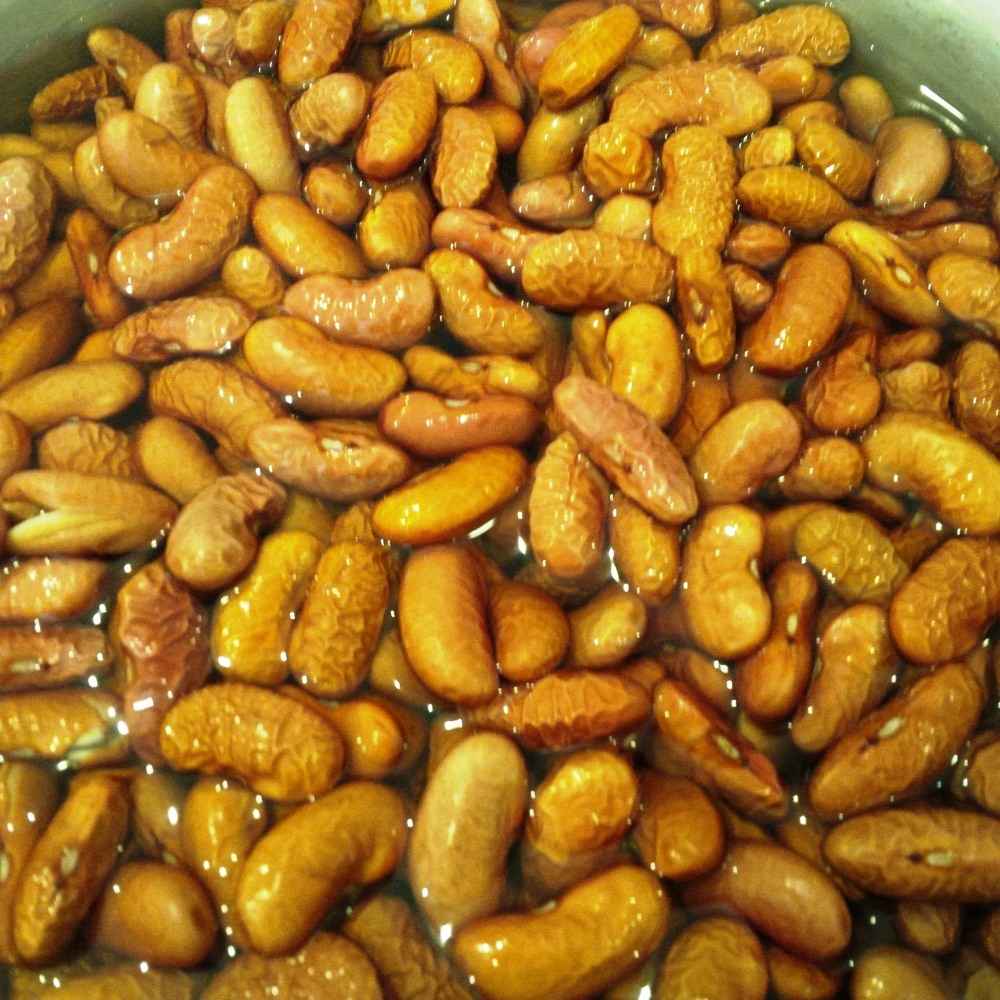
Discard the water they were soaking in, cover with fresh water, turn your crock pot on high and go do something else.
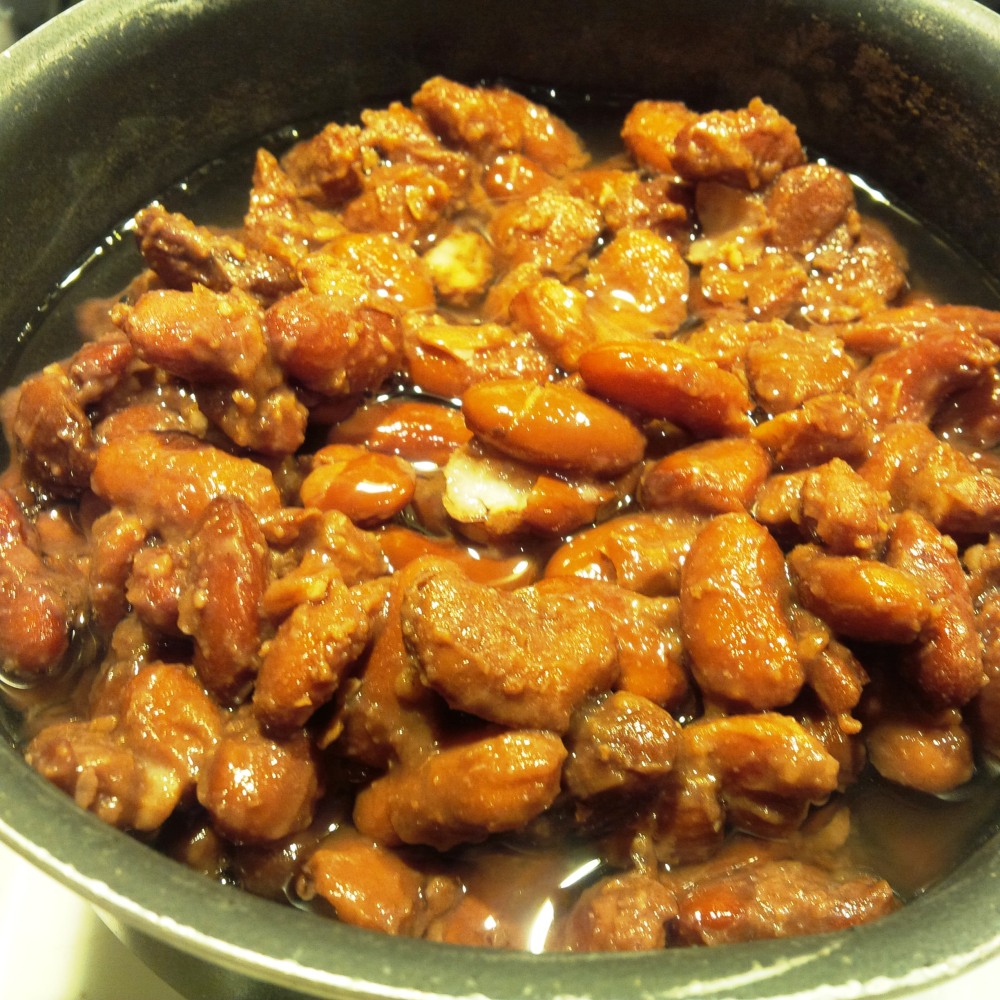
When the beans are ready to the point of falling apart, transfer them to a stove top pot and cover with water. Give them a stir, to prevent from sticking to the pot.
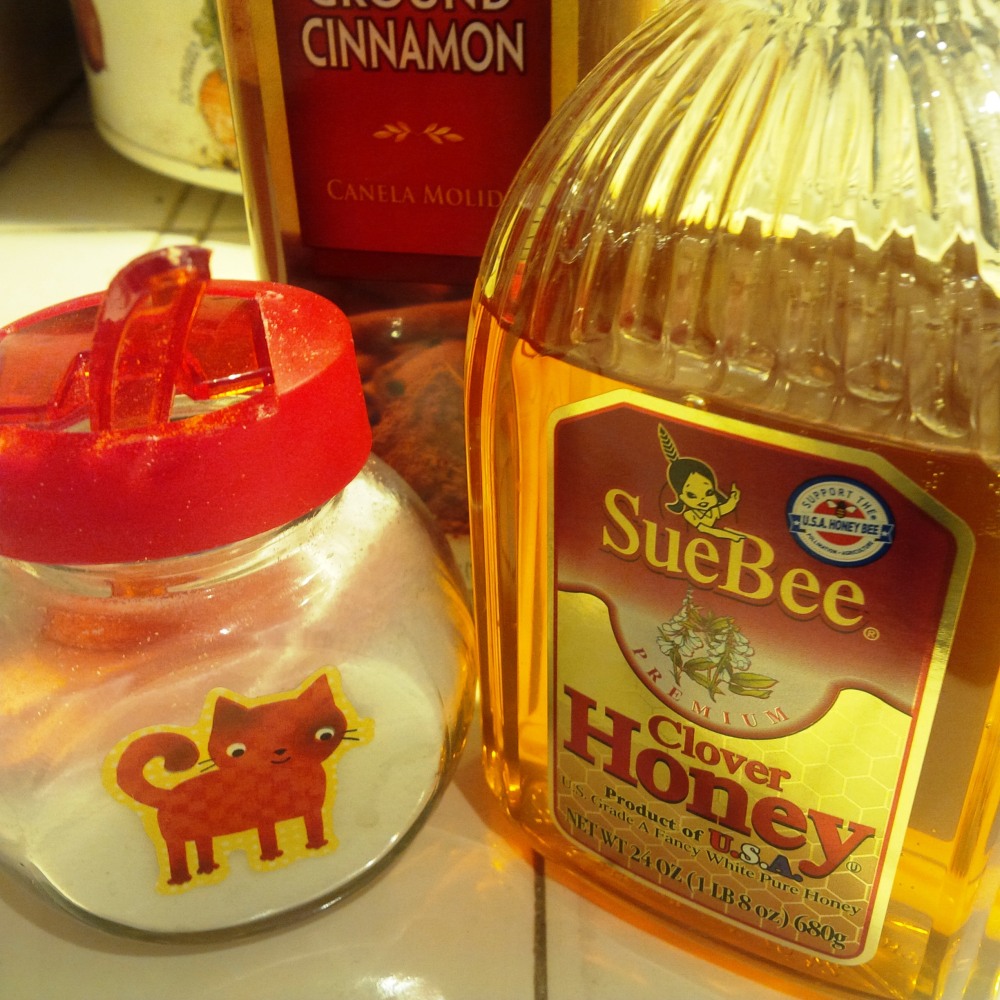
Bring them to boil and add honey and cinnamon (you can also add nutmeg, but my husband doesn’t like it, so I don’t do it). You’ll have to adjust the sweetness to taste, but I cheat. If I think it’s not sweet enough, I add xylitol instead of honey. I think the level of sugar on Rosh Hashana is beyond tolerance as it is.
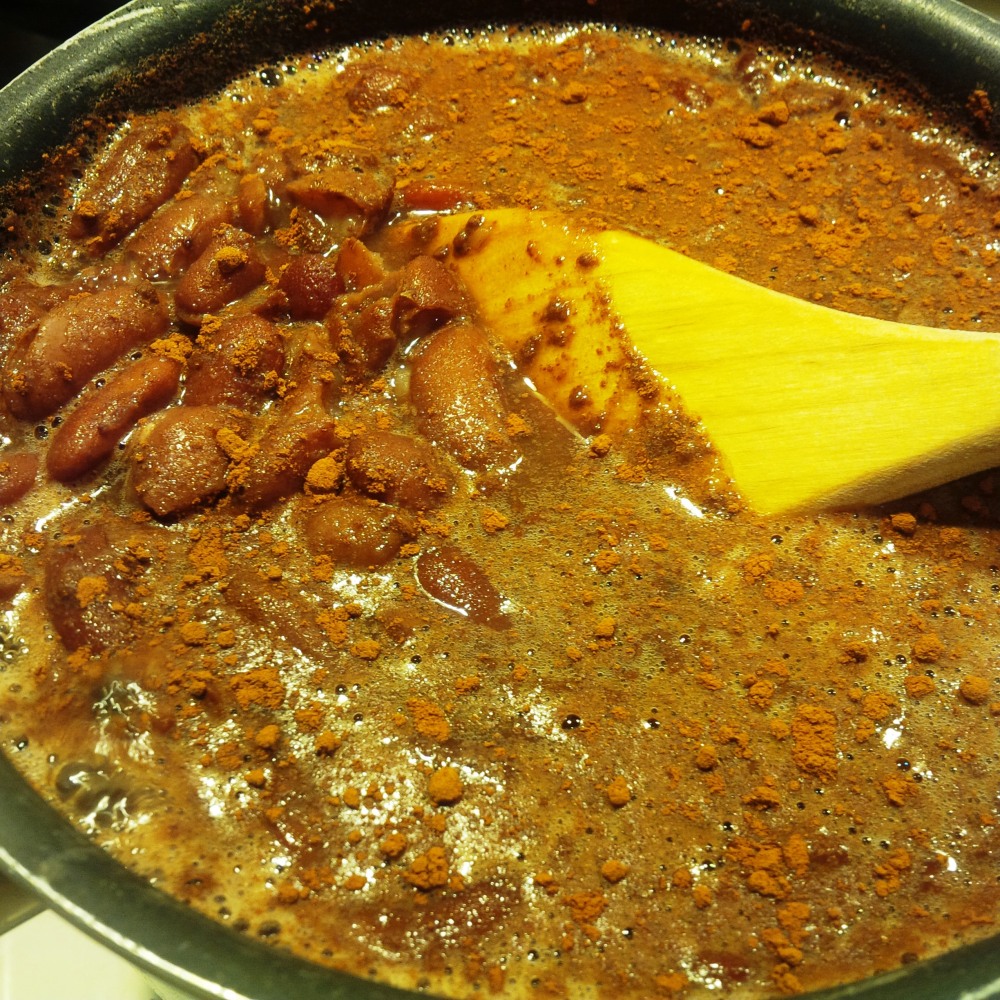
Stir it and bring to boil again. Reduce heat and simmer until most of the liquid evaporates. You’ll need to stir it occasionally and taste it for sweetness.
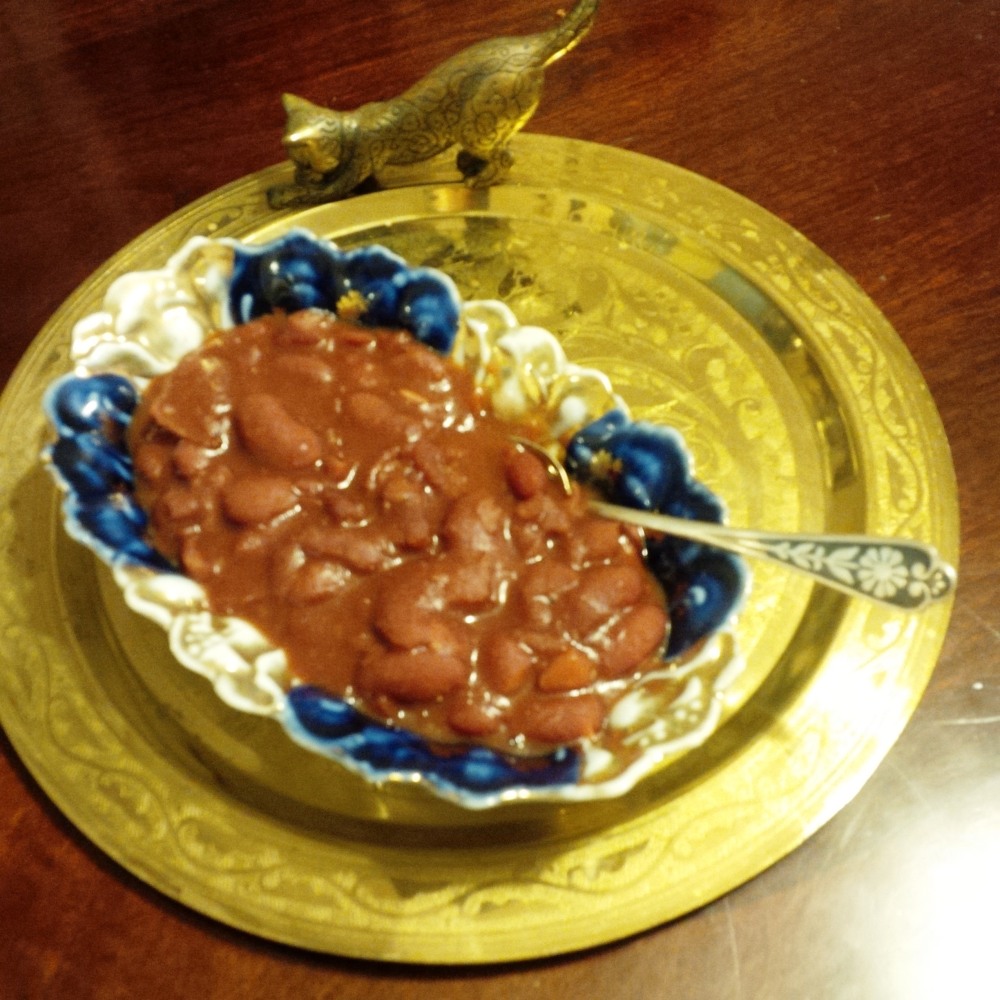
Keep it refrigerated and serve it cold. In my family it has always been everybody’s favorite not only on the holiday table, but also as a snack or even dessert. May our merits increase, and may all our loved ones and dear friends have a happy, healthy, and sweet year! Shana Tova! A Zis Yor!
INGREDIENTS
- 2 cups cooked red kidney beans (1 cup dry)
- 1/2 cup honey or more to taste
- 1 teaspoon cinnamon
PROCEDURE
- Soak beans for at least 2 hours, preferably overnight. Discard soaking water, cook in crock pot or stove top until very soft. Stir as needed.
- Transfer to stove top pot, add water to cover, bring to boil.
- Add honey and cinnamon, stir, bring to boil, reduce to simmering. Simmer until most of the liquid evaporates, stirring occasionally. Adjust sweetness to taste.
Enjoy!

Yummy yummy 🙂
LikeLiked by 1 person
Thank you dear!
LikeLike
I’m intrigued 🙂 I know the word, though spelled as ‘cymes’- I went to a Jewish wedding in Cracow, Poland -I’m not sure how kosher and traditional it was but it was fantastic anyway. And there was ‘cymes’ there 🙂 With carrots as well (I don’t remember everything)
LikeLiked by 1 person
I am sure this is how it will be spelled in Polish. I will post a carrot tzimmes as soon as I make it,but mine is so very basic.
LikeLiked by 1 person
I can’t wait to try this. Thanks for the history. I love the clip from Fiddler on the roof 🙂 One of my favorits!
LikeLiked by 1 person
Thank you – it’s one of mine as well!
LikeLike
Thanks Dolly dear – Scheduled for Sept 29th
LikeLiked by 1 person
Thank you so much!
LikeLiked by 1 person
Love it ❤
LikeLiked by 1 person
Hi Dolly always love your combination of history and your recipes!! Thanks for the share.
LikeLiked by 1 person
Glad you like it! I had to hide it in the fridge from my husband, otherwise I wouldn’t have it for holiday table!
LikeLiked by 1 person
The third time makes it true,my grandmother used to say!
LikeLike
Sounds really good. I love beans and I cook mine in a crock pot too. Works like a charm every time and you can almost forget about them and do other things. 🙂
LikeLiked by 1 person
That’s my thing too: throw them into a crock pot and go grade student papers or something.
LikeLiked by 1 person
Reblogged this on koolkosherkitchen and commented:
Today is the national “I Love Honey” day. I only use honey during High Holidays that start with Rosh Hashana, popularly known as Jewish New Year, and end with Simchas Torah , almost a month later. However, during this time, I go all out and try to stick honey into everything. So today I had no choice but to repeat one of my favorite High Holiday recipes. Enjoy, Beautiful People, and don’t forget – the book is out https://www.amazon.com/author/koolkosherkitchen!
LikeLike
Thank you for pingback.
LikeLike
Reblogged this on Die Erste Eslarner Zeitung – Aus und über Eslarn, sowie die bayerisch-tschechische Region!.
LikeLiked by 1 person
Thank you for reblogging.
LikeLiked by 1 person
Thank you for the nice recipe wth red beans and honey. Michael
LikeLiked by 1 person
Have a great remainder of the week, Michael!
LikeLike
Haha..I am glad I am not only one who has to hide things from hubby or I stick labels on DO NOT EAT…Lol…Love the recipe..Did you do Pickled watermelon rind recipe at some point Dolly? I am trying to remember who did 🙂
LikeLiked by 1 person
I am fond of fenugreek leaves
LikeLiked by 1 person
Are you? I’ve never tried them. Have to look into it.
LikeLiked by 1 person
Quite a strong flavour to curries
LikeLiked by 1 person
Interesting – thank you
LikeLiked by 1 person
I love your post and regret that I can’t do honey but will be back from @EsmeSalon for more.
LikeLiked by 1 person
Thank you so much for your lovely comment, dear Ellen. Can you try agave? It will work with most honey recipes, in my experience.
LikeLike
Then I will give it a go. Thank you.
LikeLike
My pleasure, dear Ellen – enjoy!
LikeLike
Thank you for including me, dear Esme!
LikeLike
Intentionally or not, this recipe has a certain Southern flair. Red beans and rice are, of course, traditional Southern fare for New Year’s. 🙂 We cannot tell what the New Year will hold. May we again, however, turn to God. He is our rock and fortress. ❤
LikeLiked by 1 person
Amen!
I didn’t know about red beans and rice being Southern traditional for New Year; thank you for educating me, dear Anna. I wish you a happy, healthy, and safe 2021!
LikeLiked by 1 person